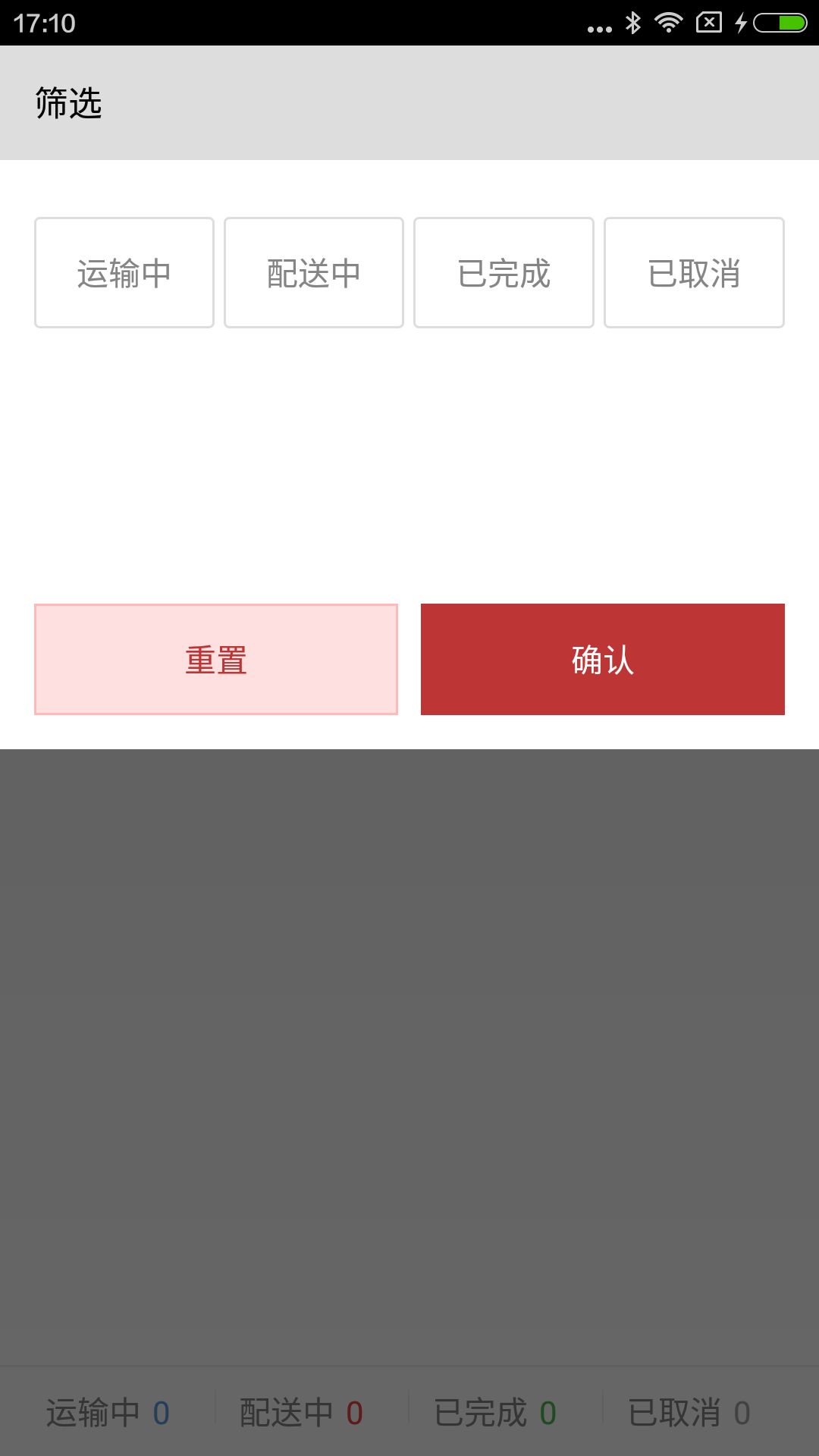Android 开发过程中,自定义dialog 用得很多,通常都是通过继承Dialog, 再加载自定义的xml来实现。
//自定义Dialog
public class OrderFilterDialog extends Dialog {
public OrderFilterDialog(Context context) {
super(context);
initView(this);
}
public OrderFilterDialog(Context context, int themeResId) {
super(context, themeResId);
initView(this);
}
public void initView(Dialog dialog) {
dialog.requestWindowFeature(Window.FEATURE_NO_TITLE);
dialog.setContentView(R.layout.dialog_search_order);
show();
dialog.setCancelable(false);
Window window = dialog.getWindow();
WindowManager.LayoutParams lp = window.getAttributes();
lp.width = WindowManager.LayoutParams.MATCH_PARENT;
lp.height = WindowManager.LayoutParams.WRAP_CONTENT;
lp.gravity = Gravity.TOP;
window.setAttributes(lp);
window.setWindowAnimations(R.style.DialogInOutTopAnimation);
}
}运行后,发现效果如下,
我们发现,match_parent属性根本没有生效。查看Dialog源码才发现,默认Dialog是有一个theme属性的,坑。
Dialog部分代码如下,
/**
140 * Creates a dialog window that uses the default dialog theme.
141 * <p>
142 * The supplied {@code context} is used to obtain the window manager and
143 * base theme used to present the dialog.
144 *
145 * @param context the context in which the dialog should run
146 * @see android.R.styleable#Theme_dialogTheme
147 */
148 public Dialog(@NonNull Context context) {
149 this(context, 0, true); //默认传入0
150 }
151
152 /**
153 * Creates a dialog window that uses a custom dialog style.
154 * <p>
155 * The supplied {@code context} is used to obtain the window manager and
156 * base theme used to present the dialog.
157 * <p>
158 * The supplied {@code theme} is applied on top of the context's theme. See
159 * <a href="{@docRoot}guide/topics/resources/available-resources.html#stylesandthemes">
160 * Style and Theme Resources</a> for more information about defining and
161 * using styles.
162 *
163 * @param context the context in which the dialog should run
164 * @param themeResId a style resource describing the theme to use for the
165 * window, or {@code 0} to use the default dialog theme
166 */
167 public Dialog(@NonNull Context context, @StyleRes int themeResId) {
168 this(context, themeResId, true);
169 }
170
171 Dialog(@NonNull Context context, @StyleRes int themeResId, boolean createContextThemeWrapper) {
172 if (createContextThemeWrapper) {
173 if (themeResId == 0) {
174 final TypedValue outValue = new TypedValue();
175 context.getTheme().resolveAttribute(R.attr.dialogTheme, outValue, true); //若值为0,则默认设置dialogTheme样式
176 themeResId = outValue.resourceId;
177 }
178 mContext = new ContextThemeWrapper(context, themeResId);
179 } else {
180 mContext = context;
181 }
182
183 mWindowManager = (WindowManager) context.getSystemService(Context.WINDOW_SERVICE);
184
185 final Window w = new PhoneWindow(mContext);
186 mWindow = w;
187 w.setCallback(this);
188 w.setOnWindowDismissedCallback(this);
189 w.setWindowManager(mWindowManager, null, null);
190 w.setGravity(Gravity.CENTER);
191
192 mListenersHandler = new ListenersHandler(this);
193 }其中
if (themeResId == 0) {
final TypedValue outValue = new TypedValue();
context.getTheme().resolveAttribute(R.attr.dialogTheme, outValue, true);
themeResId = outValue.resourceId;
}
从上述代码可以看出,若Dialog没有设置默认样式,系统会自动给你适配为R.attr.dialogTheme样式。
而查看themes.xml后,发现 dialogTheme样式是自带有Padding值的,所以match_parent自然是无效的。
那么,如何实现match_parent呢
(1) 设置padding值为0。
dialog.getWindow().getDecorView().setPadding(0, 0, 0, 0);(2) 自定义一个Theme,覆盖原生Theme。
OrderFilterDialog dialog = new OrderFilterDialog(context, R.style.test);运行效果如下,
























 7877
7877

 被折叠的 条评论
为什么被折叠?
被折叠的 条评论
为什么被折叠?








